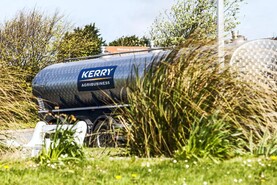The third National Forest Inventory published this week confirms the controversial rush to forestry planting in Co Leitrim, which now has the highest forest density of any county in the Republic of Ireland.

From having 15.1% of its land area under forestry in the first survey in 2006, Leitrim overtook Clare with 16.7% in 2012 and Wicklow with 18.9% last year.
In acreage terms, Cork has the largest forest estate with 90,020ha, followed by Galway with 60,050ha and Kerry with 57,540ha. Forests now occupy 770,020ha, representing 11% of the national territory.
The survey found that annual timber production had grown to just under 5m m³ over the past five years, while the growing stock increased nearly twice as fast under the combined effects of new plantings and growth in relatively young existing forests.
Minister of State for Agriculture Andrew Doyle said that the 1.28m m³ increase in annual timber harvesting over the past five years “represents a valuable source of revenue for forest owners and a source of additional employment in the rural economy”.
The expansion in the growing tree stock also removed greenhouse gases from the atmosphere to the tune of 3.8mt CO2e/year over the past decade. This represents half of the emissions from Irish milk production last year.
These figures will be “critical” in setting reference levels for Ireland’s 2030 climate targets, the inventory published by the Department of Agriculture noted, with the EU allowing some flexibility in offsetting these removals against emissions.
“If afforestation doubled to 10,000ha/annum and rewetting of organic soils in agriculture doubled in area, an extra 1.4mt CO2e of sequestration could be achieved annually,” Teagasc said in a recent study.
The multi-annual National Forest Inventory, however, does not reflect the recent fall in afforestation. Jut over 5,500ha were planted last year and IFA forestry chair Pat Collins has said that the sector will be lucky to achieve 4,000ha this year, falling nearly 50% behind national targets. He blamed Government delays in making 200,000ha of marginal land eligible for grant-aided afforestation.
The marginal land identified in a 2016 study by the Council for Forest Research and Development is not currently farmed, but would be suitable for forestry.






 This is a subscriber-only article
This is a subscriber-only article









SHARING OPTIONS: